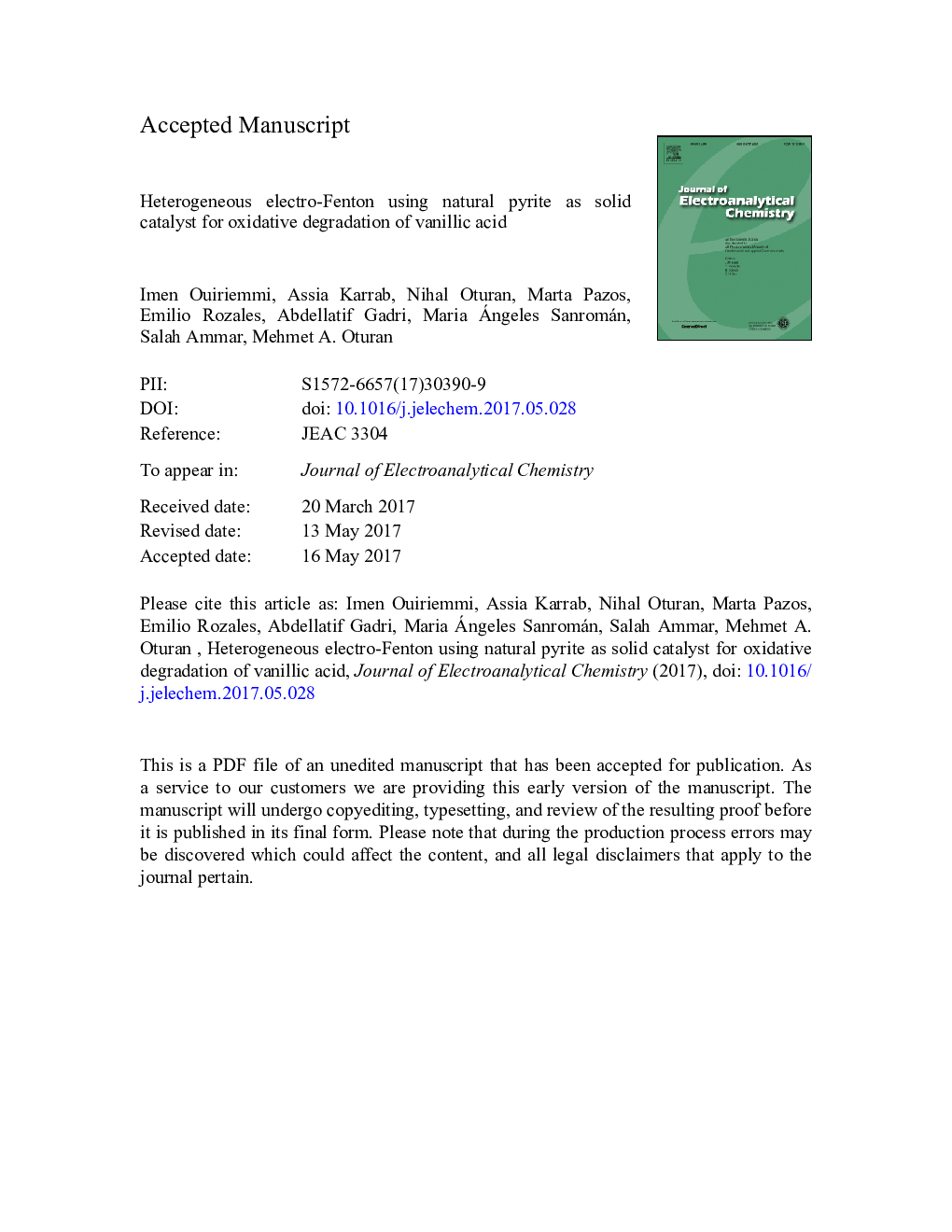| Article ID | Journal | Published Year | Pages | File Type |
|---|---|---|---|---|
| 4907937 | Journal of Electroanalytical Chemistry | 2017 | 35 Pages |
Abstract
Heterogeneous electro-Fenton process using a natural pyrite as solid catalyst was used to degrade vanillic acid (VA), one of the major phenolic components of olive mill wastewaters. This heterogeneous process has advantages over classical electro-Fenton process such as large working pH range, recovering and recycling of the catalyst and thus cost reduction. Experiments were performed in an undivided electrochemical cell equipped with a Pt anode and a carbon felt cathode. The effect of operating parameters such as pyrite dosage, applied current and initial pH on VA degradation has been investigated. The VA decay kinetics and the mineralization of the aqueous solutions were monitored by HPLC analysis and TOC measurements, respectively. Results showed that VA was completely removed by the reaction with hydroxyl radicals generated from electrochemically assisted Fenton's reaction. The decay kinetics of VA oxidation was found to follow pseudo-first order reaction and the rate constant for oxidation of VA was determined to be (5.27 ± 0.03) Ã 109 molâ 1 L sâ 1. A mineralization rate of 89.2% was reached with a pyrite dosage of 1 g Lâ 1. HPLC and GC-MS analyses permitted to identify a large number of aromatic/cyclic and aliphatic reaction intermediate products. Based on these intermediates products as well as the release of inorganic ions and TOC removal determination a detailed reaction pathway was proposed for the mineralization of VA by OH generated during heterogeneous electro-Fenton process.
Keywords
Related Topics
Physical Sciences and Engineering
Chemical Engineering
Chemical Engineering (General)
Authors
Imen Ouiriemmi, Assia Karrab, Nihal Oturan, Marta Pazos, Emilio Rozales, Abdellatif Gadri, Maria Ángeles Sanromán, Salah Ammar, Mehmet A. Oturan,
